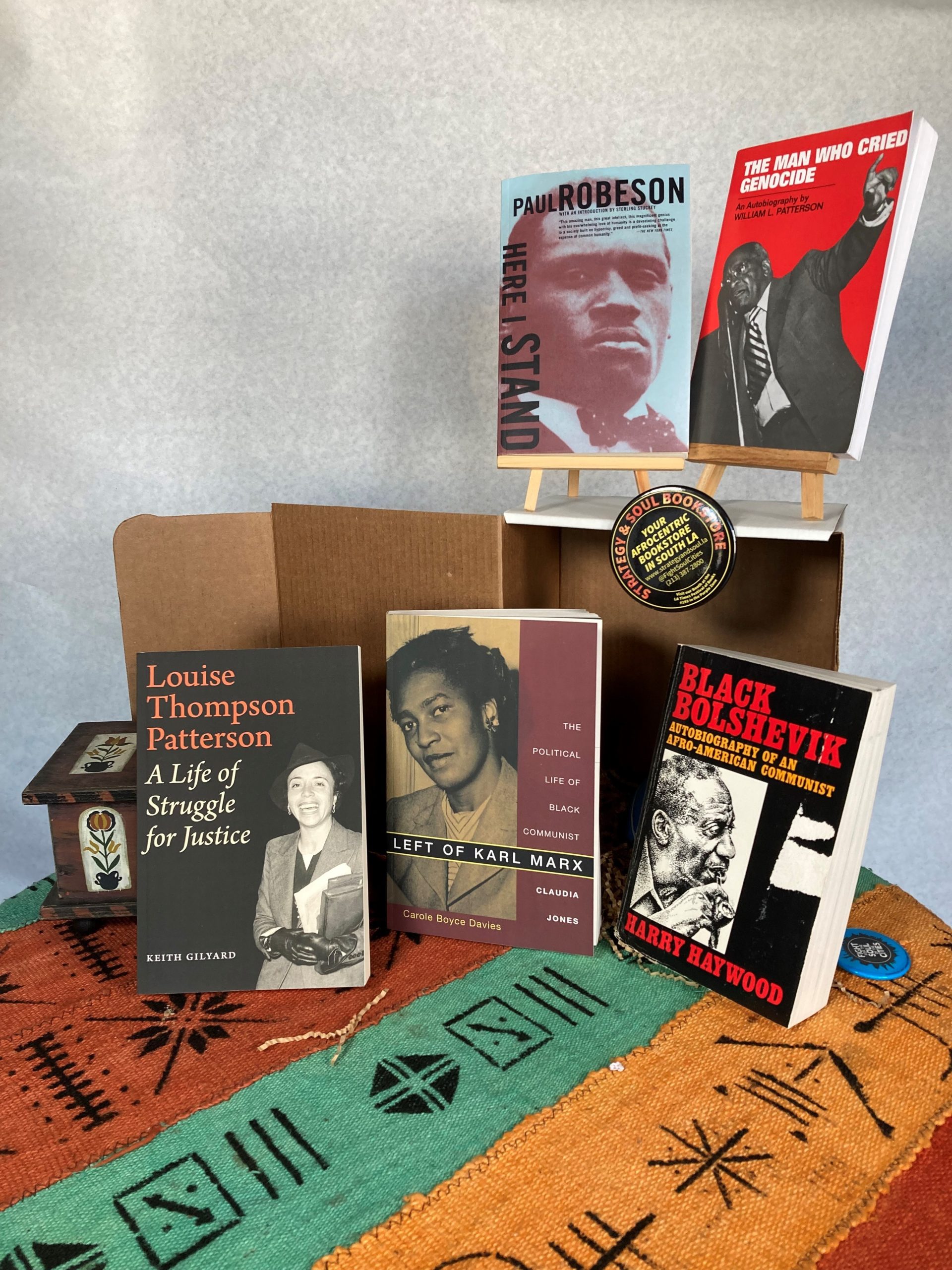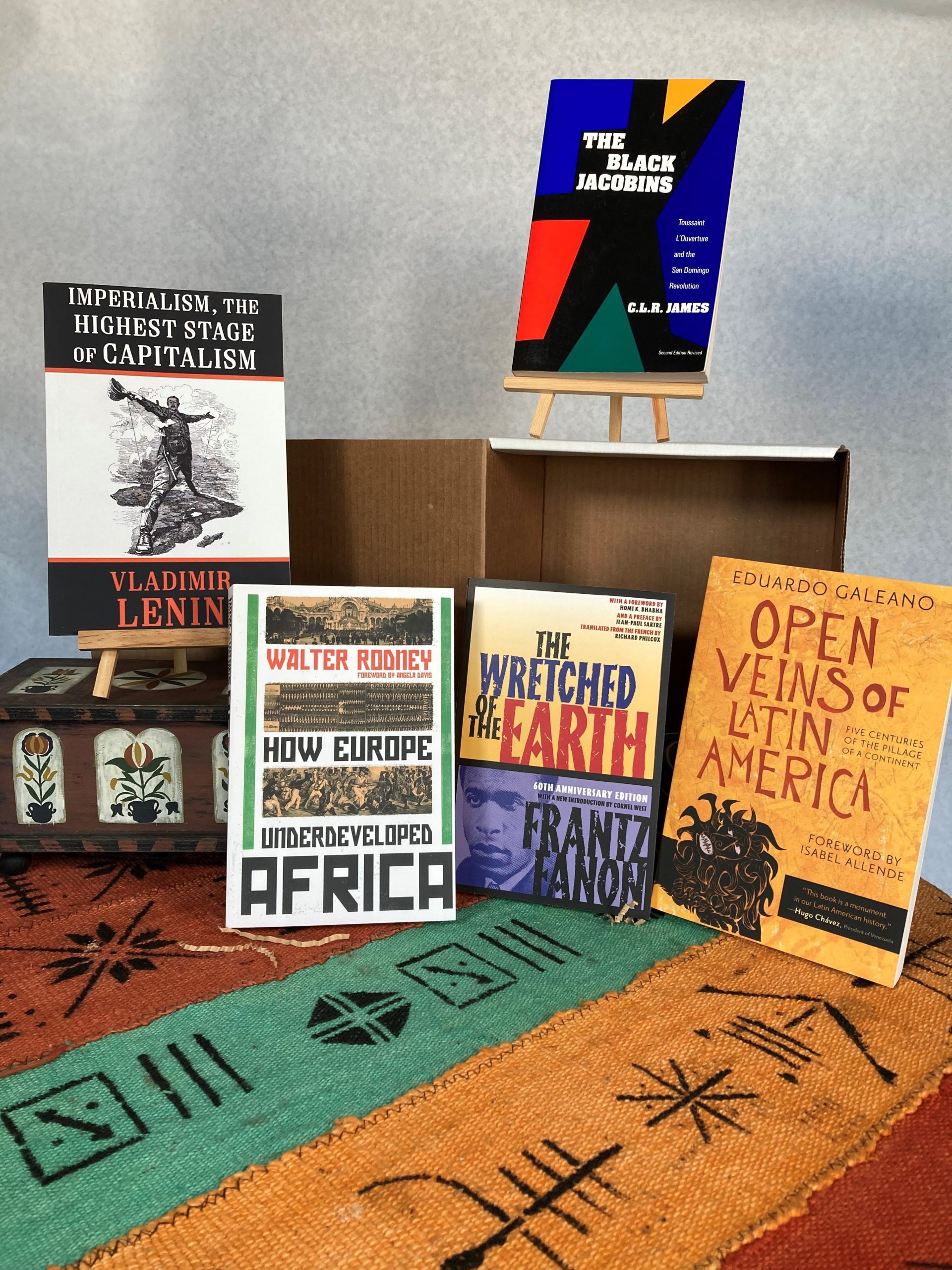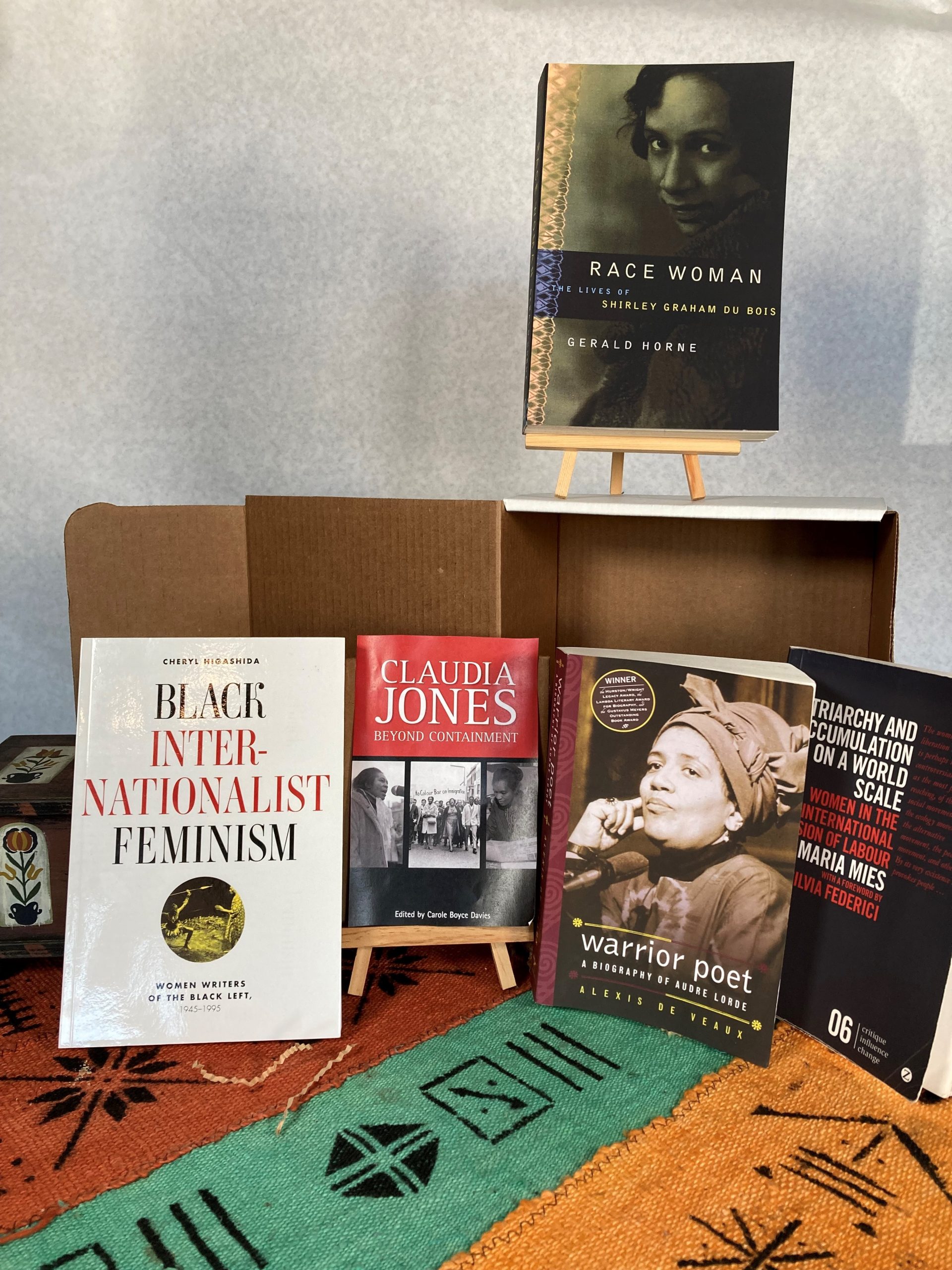Description
Black Bolshevik: Autobiography of an Afro-American Communist by Harry Haywood
Left of Karl Marx: The Political Life of the Black Communist Claudia Jones by Carole Boyce Davies
The Man Who Cried Genocide: Autobiography of William L. Patterson
Louise Thompson Patterson: A Life of Struggle for Justice by Keith Gilyard
Here I Stand by Paul Robeson
This collection tells the story of five great Black communist revolutionaries—Harry Haywood, Louise Thompson Patterson, William L. Patterson, Claudia Jones, and Paul Robeson, a close ally of the CPUSA. Through their work they successfully fought against the U.S. Imperialist white settler state and moved the CPUSA to recognize Black people as an Oppressed Black Nation inside the U.S. This dramatically expanded the vision of the Black Liberation at the time, set the groundwork for the mass expansion of the CPUSA in the Black community, and is the framework the Strategy Center employs to focus our work today.
The U.S. Communist Party, initiated in 1917 in response to the Bolshevik, Russian Revolution of the same year, was a merger of different radical tendencies all of whom rejected social democracy and wanted to work for world revolution against imperialism and for socialism. During the 1920s, the CPUSA believed the revolution was imminent. The party carried out an ultra-left line in which it went to war with every other group on the left. During that time, the mid 1920s, the Comintern established the Communist University of the Toilers of the East (KUTV) that trained hundreds of the most gifted Third World and Black communist leaders including Ho Chi Minh, Jomo Kenyatta, and Harry Haywood, a Black communist prominent in the CPUSA. Haywood, seeing the mass appeal of Marcus Garvey’s Back to Africa Movement, appreciated its Black nationalist appeal but rejected its metaphysical plan to return to Africa and its capitalist objectives. Haywood and the influential Cyril Briggs of the African Blood Brotherhood were theorizing how revolutionary Black nationalism could be merged with the struggle for socialism. Out of that inclination, and with the help the Comintern and their South African comrades, they concluded that Black people in the United States were not just members of the working class, but members of an oppressed Black Nation in the Black Belt South with the right of self-determination up to an including the right of secession. This integration of Black Liberation and socialism along with the CPUSA’s move towards a popular front where it grasped the need for broad coalitions, led to the explosive growth of the CPUSA in U.S. society. This expansion was reflected in the Black community through the party’s defense of the Scottsboro Boys (William L. Patterson as their chief counsel), its cultural impact on the Harlem Renaissance (Louise Thompson) and the building of the Congress of Industrial Organizations—in which white, anti-racist CP organizer Wyndham Mortimer was essential. Louise Thompson later married William L. Patterson and what a power couple they made. She was the dynamic mass figure who worked with Langston Hughes, Ralph Ellison, and brought so many artists close to the party through her work with the Committee For Negro Rights and her deep ties to the resistance fighters in the Spanish Civil War.
Claudia Jones a West Indian leader played a major role in the CPUSA thorough her integration of the struggles of working people, women, and Black Liberation. Besides being a compelling mass figure and head of the CPUSA’s women’s commission, as a Black Caribbean, she took on Earl Browder, the later disgraced head of the CPUSA who proposed its dissolution, to argue that the right of Black people to self-determination after World War II was even more pressing than during the Great Depression.
Paul Robeson, in Here I Stand writes a short autobiographical statement of defiance and tells his revolutionary evolution from the child of a preacher, a brilliant scholar, All American Football Player, Phi Beta Kappa, a brilliant baritone singer who was the most revered Negro in the world. Then Robeson he threw his lot in with the nations of Africa, the Soviet Union and all the nations of Third World—another great Black leader who saw the connection between Black and Third World liberation and socialism.
As always, led by J. Edgar Hoover of the Palmer Raids and FBI, but the entire bipartisan U.S imperialist ruling class, the system repressed the best and brightest of its opponents. Harry Haywood lived under constant state harassment. Claudia Jones was deported. Louise Thompson Patterson and William L. Patterson were placed under 24 hour FBU surveillance. William was sentenced to prison for violation of the Smith Act that said that no communist could advocate their own views. Paul Robeson and W.E.B. DuBois were trapped in the U.S. as the U.S. revoked their passports. But they continued to resist. Patterson wrote the prescient and still deeply relevant, We Charge Genocide: The Crimes of the United States against the Negro people. They were all friends, all comrades, all superstars of talent and historical impact.
These books, stories of five remarkable revolutionaries, paint a vivid picture of the great influence the CPUSA from the Abraham Lincoln Brigade in the Spanish Civil War, the fight against fascism, the building of the National Negro Conference, the leadership in forming the Congress of Industrial Organizations. The specific choices of their life journeys and their larger than life lives, make fascinating reading. Read together, these give books will cement the historical legacy and beyond comprehension historical impact of Five Great Communists whose leadership shapes the work of those of us in the Strategy Center reflected in their prominent inclusion in the key books in Strategy and Soul Books





Reviews
There are no reviews yet.